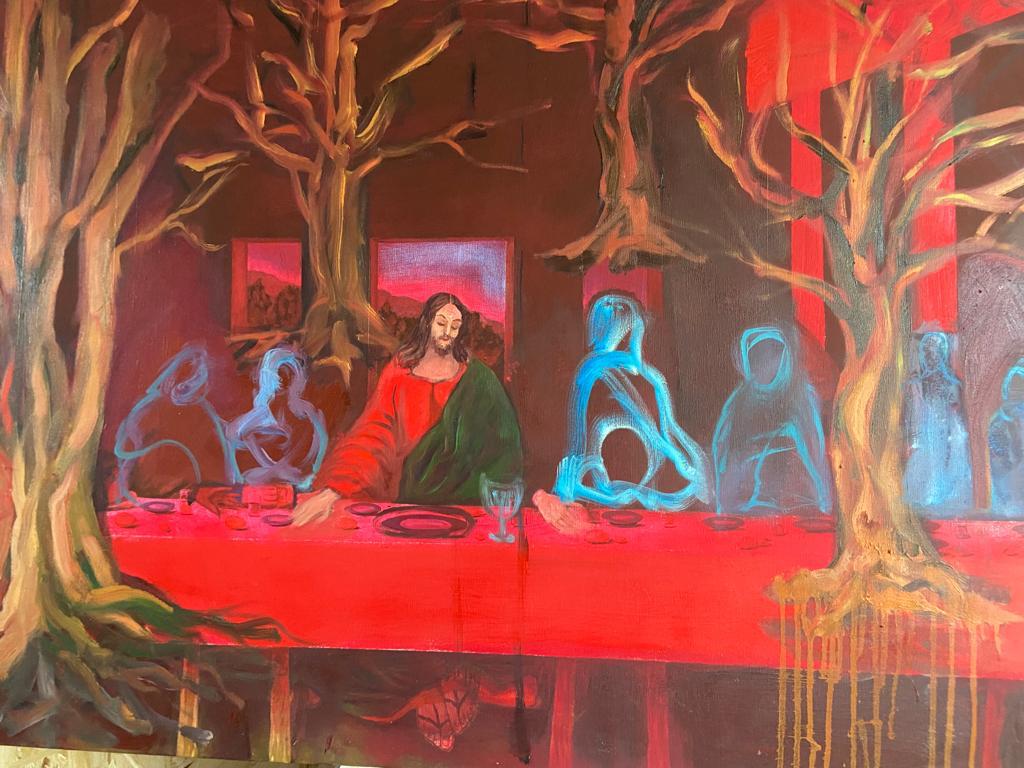The Museum of History and Geography became the perfect setting to host from April 22, 2022, the proposal entitled “The Last Supper”, where several artists appropriate the biblical passage in which the son of God shares for the last time with his twelve disciples. Thus, we receive beautiful interpretive plans in relation to one of the masterpieces of Leonardo da Vinci. Far from the artists approaching the natural model, each one composes their own version of the “momentum”.
It is a fact that the encounter between cultures unfolds a revealing syncretic universe, which is confirmed in the multichromatic and multiethnic Caribbean space. In this way, the artists use the annals of their historical past and associate it with religious tradition from a completely artistic reading.
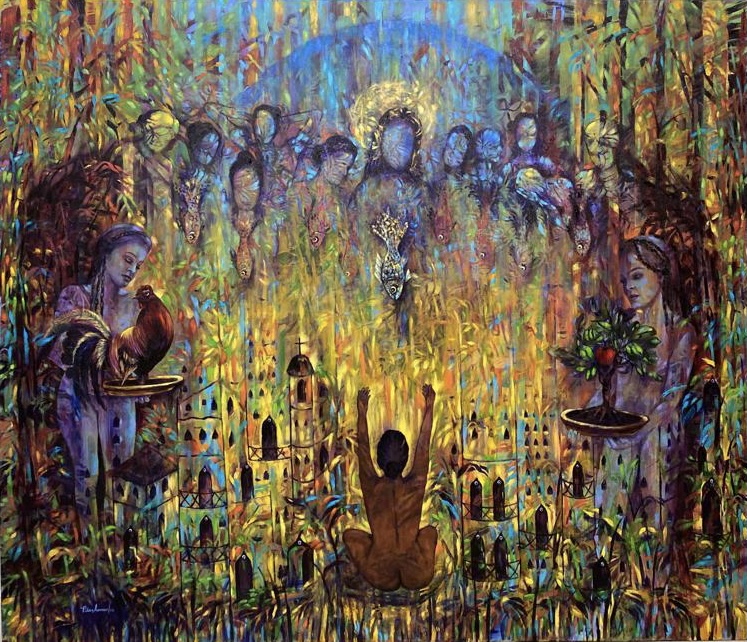
It is not the first time that this group has rehearsed readings on the “Last Supper” by making the works available to the public close to the period that the Christian calendar dedicates to Holy Week. It is an exercise that already has four deliveries, managing to integrate extraordinary creators such as: Geo Ripley, Rosa Tavárez, Raphael Díaz, José Sejo, Miguel Gómez, Juan Bravo and Iris Pérez.
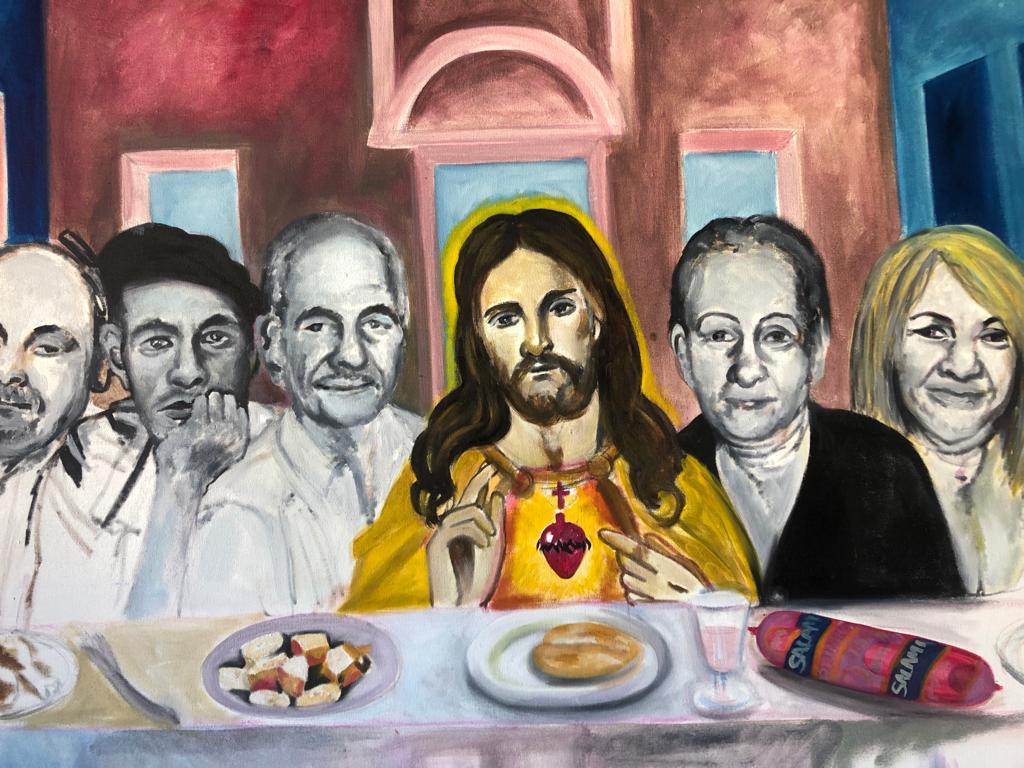
Similarly, we find the works of Lizette Mejía, Judith Mora, Pilar Asmar, José Gabriel Atiles, Eddy Santiago, and Julia Castillo. These artists, whose visual work places them at different stages in the history of Dominican art, have been developing a particular style, but at the thematic level they generate points of coincidence.
The “last supper” becomes a pretext to display an imaginary full of satire, humor and reflection in a playful game of space, actions and time.
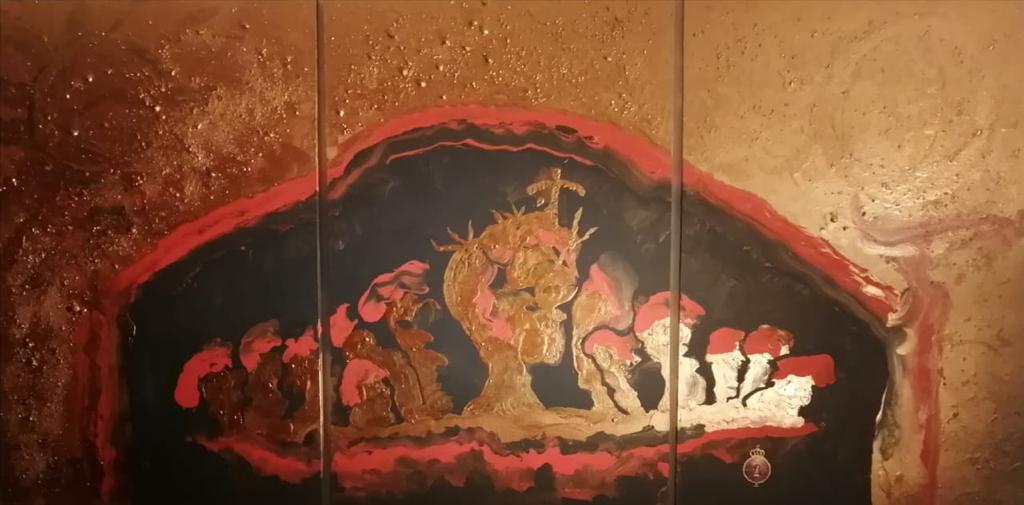
And it is that, the Dominican Republic corresponds to a geographical space with punctual elements. In addition to being the center where the first Western civilization was built in the New World, it is a breeding ground for the first miscegenation process in America.
Taking into account the preceding statement, it is necessary to remember that the so-called “first parents”, that is, the aborigines, did not follow the Catholic tradition, rather they were polytheists and worshiped elements of nature such as corn, yucca the earth, to cite a few examples.
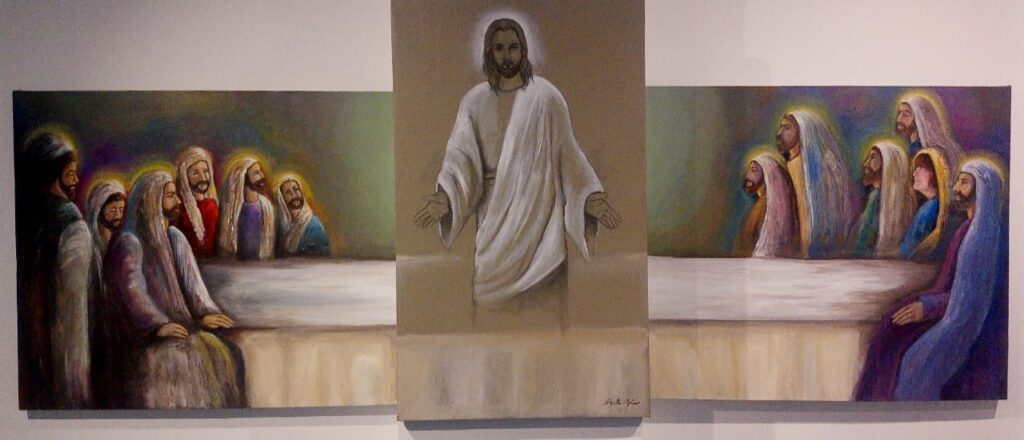
At the beginning of the process of colonization and conquest, evangelization also intervenes, where art plays a leading role, since the first pictorial and sculptural representations arrive to decorate the temples of the churches that are beginning to be built. In this context, there is a very descriptive work by José Gabriel Atiles, in which those who share the Last Supper with Christ are the Taínos of Hispaniola, with the three caravels in the background and distributing fish and casabe. This piece has several readings, but immediately, it is worth noting the popular expression that: “in the absence of bread, cassava”.
Atiles returns Christ to the cave to share with the beings that Christopher Columbus called “soulless”, surrounding the composition with aboriginal details such as the duho and the cave inscriptions on the walls.
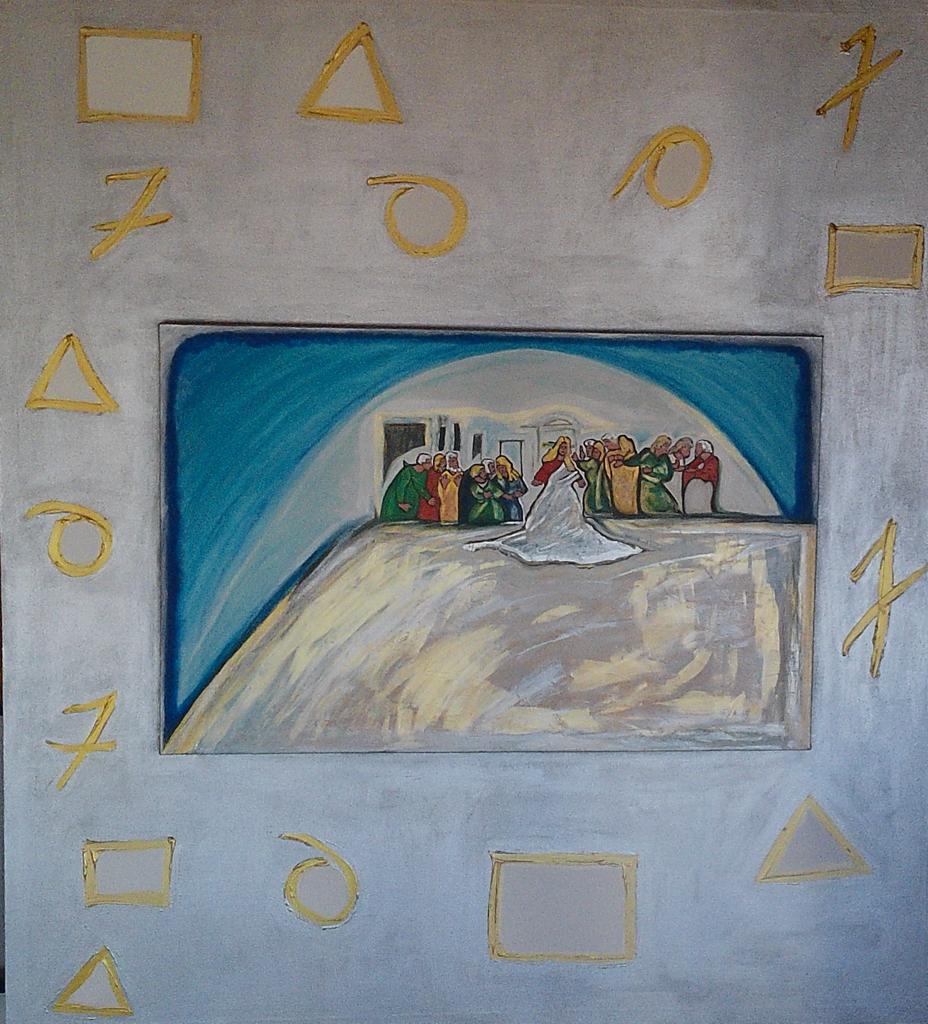
Rosa Tavarez relocates the holy supper in a personal and idyllic forest, where only the figure of Jesus receives treatment and finishes, while the disciples are only outlined in blue. The teacher superimposes trees around the center, resulting in meticulous detail, especially in the representation of the feet and, not so in the rest of the composition.
Pilar Asmar focuses on the framework that comes from Jesus’ sentence to Judas that, “before the rooster crows, you will deny me three times.” Her recreation is apocalyptic. So much so that she places three female figures in the foreground, one carries a rooster; another, an apple tree and, a third, is devoid of clothing, with her back turned, in a possessed attitude, raising her arms to let flow the scene of a Christ in the center from which a fish descends (a sign of life in the Taíno culture). ), surrounded by female and male human figures.
For his part, José Sejo recreates the Last Supper and portrays himself with a certain reticence, sweetening his own family in black and white with the exception of his sister on the right, whom he recreates with blonde hair together with her mother. In the center, the figure of Jesus in full color who, with a look into the void, tries to bless the Dominican banquet, following the tastes of his familaires, because in addition to bread, salami, pork rinds, Presidente beer and, even a sparkling wine, to please the taste of Sejo’s sister.
Geo Ripley immerses us in a universe of mysticism, letting his syncretic feeling emerge in a work that defines the historical context in which Christ pilgrimed through this world. Times of Pontius Pilate in which Rome was under the aegis of Tiberius. In the middle of a golden field, Geo Ripley opens a portal bathed in red, from which emerges a fulminating black with several busts in profile to the right, in the center, one crowned with a thorn with a palm in front in the shape of a cross, a very island motif and, more than that, Caribbean. The other busts are presented simulating Roman legionnaires. How many injustices oh Lord in your name, for the blunder of your own children.
Iris Pérez Romero appropriates the great Caribbean to place Jesus together with his disciples in a boat on the high seas. With a background of intermingled fish, a sign of life in the Taíno culture and that alludes to that eternity that impregnates the son of God, the artist does not miss the symbolism and places Jesus with a red cayenne that he directs to the center of his chest. . And it is that, in the Dominican imaginary, the cayenne is known as the flower of Christ. The artist manages to create a dynamic composition in which the stillness and solemnity of the dinner reign in contrast to the sinuous movement of the waves that welcome the boat.
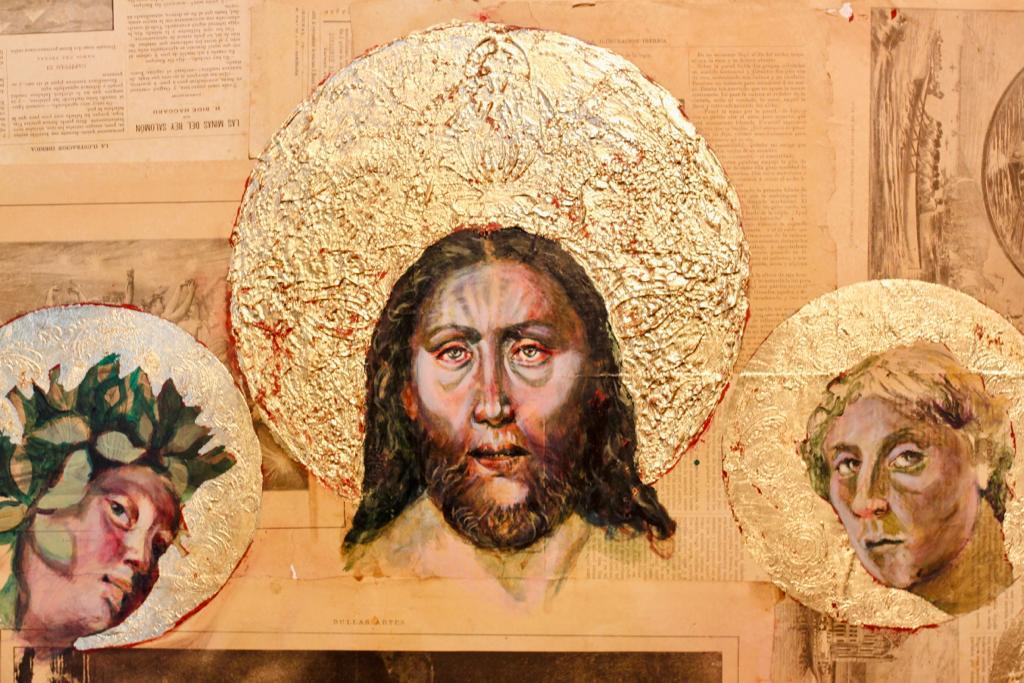
Lizet Mejía presents us with a tripartite scene in which we witness the moment in which Jesus immortalizes himself and seems to ascend together with the Father. The disciples have gathered around the table and, in the center, the risen Christ in a superimposed plane. The Lord’s Supper constituted the great meeting of Jesus with his disciples prior to his crucifixion, a fact that the artist disrupts, intermingling elements of what was and what happened. The absence of a female figure in the historical act is noted. In Lizet Mejía’s imagination, women are as important as men and that is why she places them as part of that sacred dinner, representing herself in the composition.
For her part, Julia Castillo recreates a plane of geometric shapes in which a sequence of numbers seven and numbers six stand out. The latter are recorded as if they were seen from a mirror, because if they were inverted, they could resemble the number nine, however, this is not the case. In the center, an arch is formed that serves as the background for an elevation on which the disciples bow before a standing Jesus who moves towards the front.
Judith Mora uses gold leaf to recreate the halo of Christ and two figures on the sides on a collage of newspapers varnished with an earth tone. The artist dwells a lot on the detail of her faces, giving a naturalistic treatment, through which she surprises the depth in the look and the expressiveness and realism of the whole.
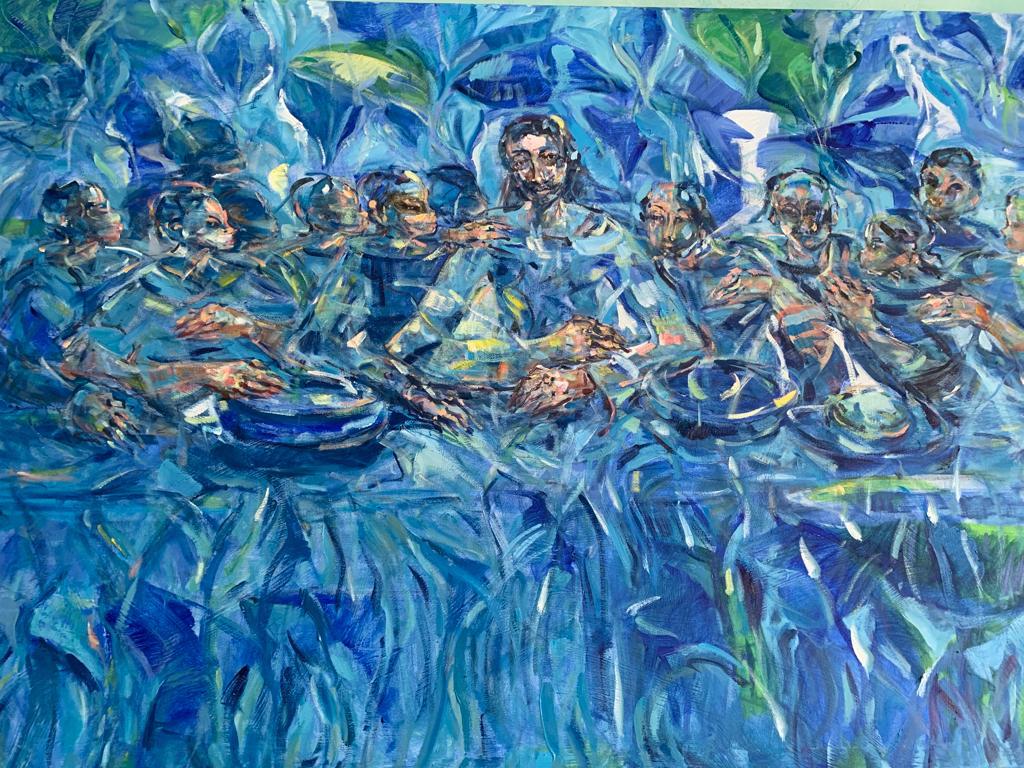
Eddy Santiago defines the face of Jesus, accompanied by bread and wine through a multichromatic effect full of light and spatiality. At first glance, the brushstrokes seem scattered in the configuration, but once we focus our eyes, the figuration becomes more perceptible imbued with virtuosity and spirituality.
Juan Bravo presents us with a shot in gray in which a strip full of tones appears, simulating the clothes of the twelve disciples, in full allegory of a Jesus abandoned by his own followers. And it is that, the king of the Jews, was betrayed and sent to the cross by those who claimed to be his brothers.
Raphael Díaz superimposes planes in black and white lines, simulating the pieces of a piano on which musical notes rest and, in golden proportion, a lady levitating with two candlesticks on her hands with seven candles each. In a pyramidal position to the floating figure, a virgin and, in the lower left corner, a detail of the Lord’s Supper, with only three visible figures, which seems to simulate the triad of Jesus, Mary and Joseph. Díaz reveals to us isolated scenes that find their link in the imaginary and motivate reflection.
Miguel Gómez crystallizes the vision of the Lord’s Supper, as if it were an image encrypted in a piece of amber, where Jesus seems to surround himself with space and human creatures, welcoming them all with paternal and devotional love. Floating hands can be seen that could well allude to Pilate washing his hands, while dolphins and fish border the composition and small boats are silhouetted.
The set in general is rich in details. Each artist with his style, way of appreciating and recreating the moment of the Lord’s Supper, reveals a passage of shapes and colors without equal. This allows the viewer to assume each piece as a kind of portal through which they have the possibility of reinterpreting the story and its characters, while maintaining a critical and, at the same time, spiritual approach.
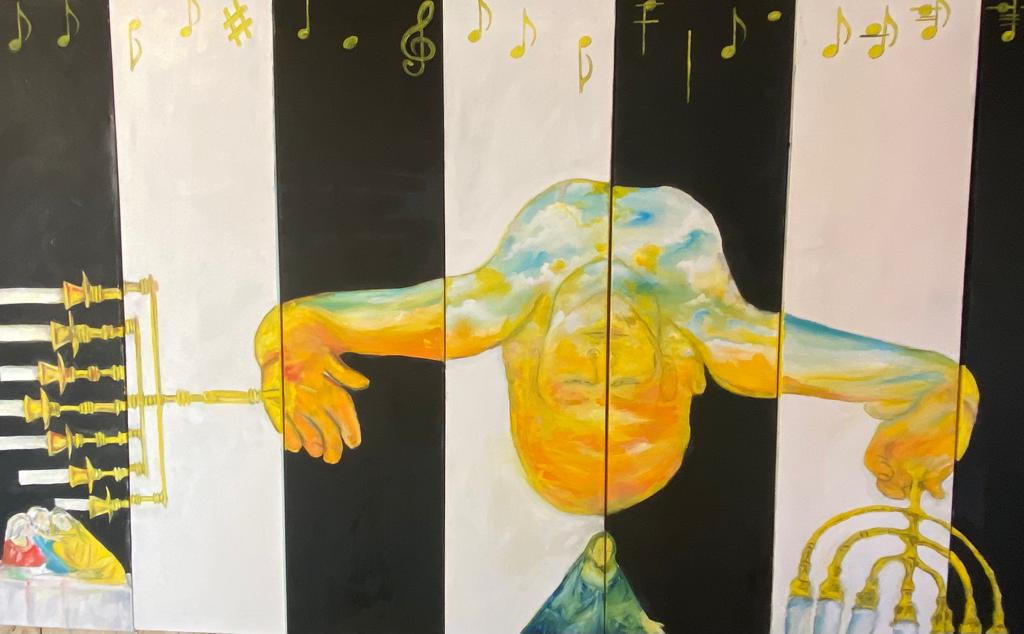
In addition to the participating visual artists, this exhibition project has added other great professionals and artists such as the soprano Pura Tyson, the pianist Jacqueline Huguet, the cellist Milena Zivkovic, as well as the teachers Santiago Fals and Marcos González in the documentary part. Likewise, the poets Arturo Aguasvivas and Raphael Díaz have participated, together with the art critic María Fals, under the museography of the architect Fior Daliza Mateo Castillo.
The project of “The Last Supper” grows, integrating other visual creators such as Salvador Sánchez, Federico Cuello, Alberto Lestrad, Jean Philippe Moiseau and Carlos Romaguera. Likewise, the participation of Francisco Hernández, Wayne Healy, Daniel Manta, Nilton Cárdenas, Fernely Lebrón, Esmeralda Bobadilla, Milcíadres Andújar, Leopoldo Maler and Arian García García is recorded.
This great team is also accompanied by the art critic Chrislie Pérez Pérez, the chefs Amelia Landestoy and María Marte, as well as the logistical support of Helpis Flota in a great tribute to the master Santiago Antonio Fals Castillo in memoriam to be developed with the start-up of scene of all manifest artistic creations, starting on Thursday, July 7, in the Gilberto Hernández Ortega room of the Perelló Cultural Center in the city of Baní, Peravia province, Dominican Republic.
Let us therefore be witnesses of the new readings proposed by the group through a sacred event such as “The Last Supper”, which they transmute with artistic touches and a great hermeneutical sense.
The Last Supper: display of artistic reflections in the current context

